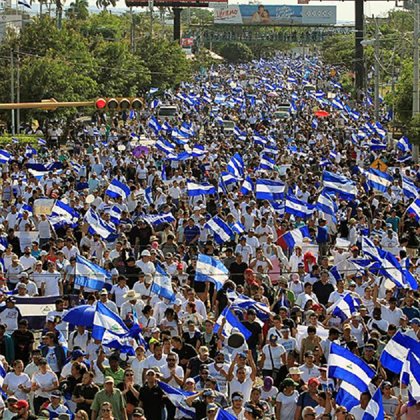NICARAGUA POLITICAL CRISIS: MORE THAN 100,000 PEOPLE PARTICIPATED IN THE MARCH IN THE CITY MANAGUA.300 PEOPLE ARE REPORTED TO HAVE BEEN KILLED SINCE THE WAVE OF PROTEST AGAINST PRESIDENT DANIEL ORTEGA.HE'S A FORMER GUERRILLA FIGHTER,BEGAN HIS THIRD FIVE - YEAR TERM IN OFFICE LAST YEAR.HIS WIFE ,ROSARIO MURILLO, IS HIS VICE PRESIDENT.
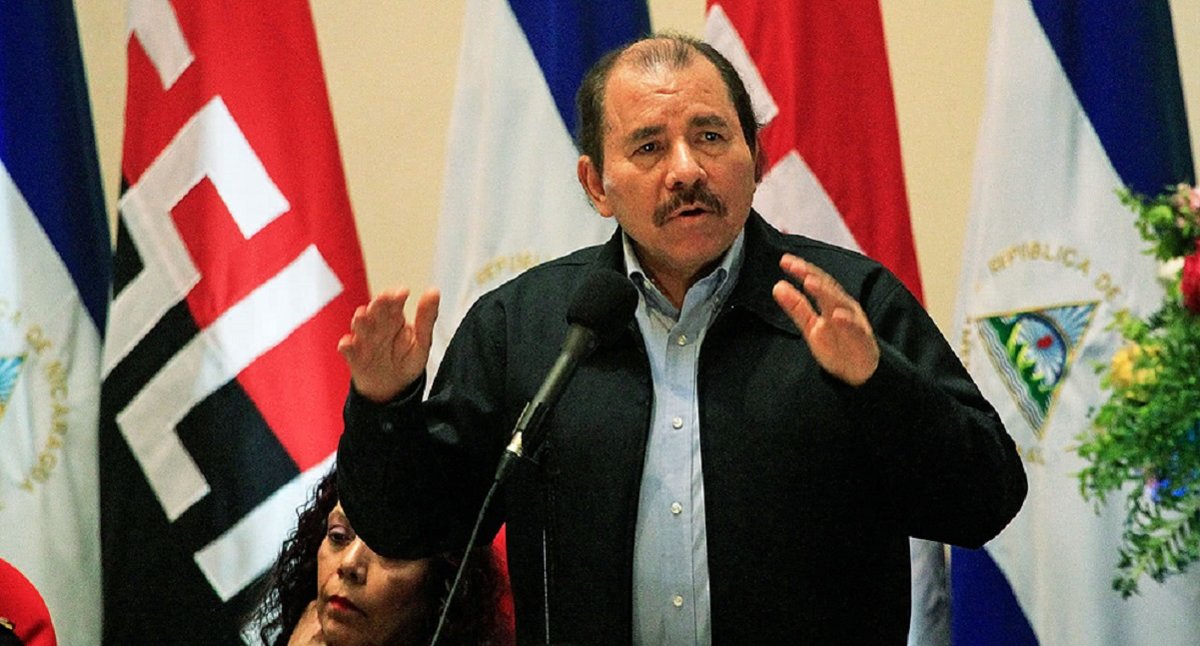 Ortega Regime once again Avoids Committing to Early Elections.Once more, the government of Daniel Ortega evaded a response to the
question of whether he would accept moving up the (2021) elections to
March 2019, as the bishops of Nicaragua’s Episcopal Conference have
proposed.During the resumption of the work groups within
the framework of the National Dialogue, the official delegation avoided
the topic, which the Civic Alliance of Justice and Democracy had
considered number one on the work agenda.
Ortega Regime once again Avoids Committing to Early Elections.Once more, the government of Daniel Ortega evaded a response to the
question of whether he would accept moving up the (2021) elections to
March 2019, as the bishops of Nicaragua’s Episcopal Conference have
proposed.During the resumption of the work groups within
the framework of the National Dialogue, the official delegation avoided
the topic, which the Civic Alliance of Justice and Democracy had
considered number one on the work agenda.
Nicaragua is experiencing the "worst political crisis" in the country's history.President Daniel Ortega has rejected calls for early elections as a solution to Nicaragua's political crisis, which has seen more than 300 people killed amid a heavy-handed crackdown on protests.He said protesters who are demanding he leave office should "seek the vote of the people" if they want to govern and must respect that his current term runs through 2021 Nicaragua's capital.Many Nicaraguans consider President Daniel Ortega incapable of governing and believe he should step down.The government recently launched a truth commission staffed primarily by individuals with former or existing ties to the FLSN—to investigate the deaths during the first wave of protests. It has further committed to engaging in a “national dialogue” with a select group of representatives from different sectors of civil society, including the university students in the 19th of April Movement.The administration has refused, however, to allow representatives from the Organization of American States (OAS) to lead the truth commission investigation as activists have demanded, and it is difficult to see how the state can investigate and hold itself accountable for the crimes that it has committed against the people of Nicaragua, especially while government repression continues in various cities throughout the country. In the meantime, activists around the country are planning a national strike, suggesting once again that these protests represent merely the opening salvo in a much longer struggle against the Ortega administration.Meanwhile, the Catholic Church has given the administration one month to respond to the protestors demands for dialogue. Regardless of their ultimate outcome, the protests have produced an irreversible shift in Nicaraguan politics. They have produced a crisis of legitimacy that may ultimately be the unexpected undoing of the Ortega-Murillo regime.Demonstrations first erupted on April 16 after the government announced social security reforms that would raise costs for retirees and workers. When police cracked down on protesters, they unintentionally fanned the flames. By April 20, tens of thousands of Nicaraguans were taking to the streets daily to protest in cities and towns nationwide.Ortega, a former leftist revolutionary, has moved to the right since his 2006 election. He has also centralized his power, controlling the media, restricting opposition and giving government jobs to family and friends. His wife, Rosario Murillo, was Ortega’s running mate in 2016 and is now Nicaragua’s vice president.In 2014, Ortega abolished term limits for the presidency, with the blessing of a National Assembly stacked with loyalists.As scholars of social conflict and regime change in Latin America, we know that authoritarian governments’ survival depends on controlling institutions and maintaining alliances with powerful forces like the military, the Church and the elite class. Nicaragua’s protest movement has imperiled Ortega’s carefully constructed coalition perhaps fatally.Ortega first came to power in 1979 after Nicaragua’s Sandinista revolution overthrew dictator Anastasio Somoza.Back then, Ortega’s rise hinged on creating a broad coalition. With the support of traditional opposition parties, many business elites, students and peasants, his Sandinista National Liberation Front moved from marginal guerrilla group to ruling party.The Sandinista government stayed in power for 10 years, creating a socialist economy, undertaking land reform and wealth redistribution.Ortega returned to power by winning elections in 2006 this time with a new, right-leaning platform that espoused traditional Christian values and pro-business economic policies.Ortega had rocky relations with the Catholic Church during the revolution. But since 2006 he has embraced both Catholic bishops and evangelical groups. Beyond religious rhetoric, he has maintained Nicaragua’s abortion ban and sought to control LGBTQ activism.The business elite likewise struck a new bargain with Ortega when he was elected in 2006. In the 1980s, Ortega worked to seize private enterprises and redistribute farmland. Now, he works with business leaders to set Nicaragua’s economic policy and labor conditions. In turn, they have supported his regime.For a while, this coalition held. Until recently, Ortega’s opposition was fragmented and weak. Since 2007, there have been few protests, which were usually met with violent repression.
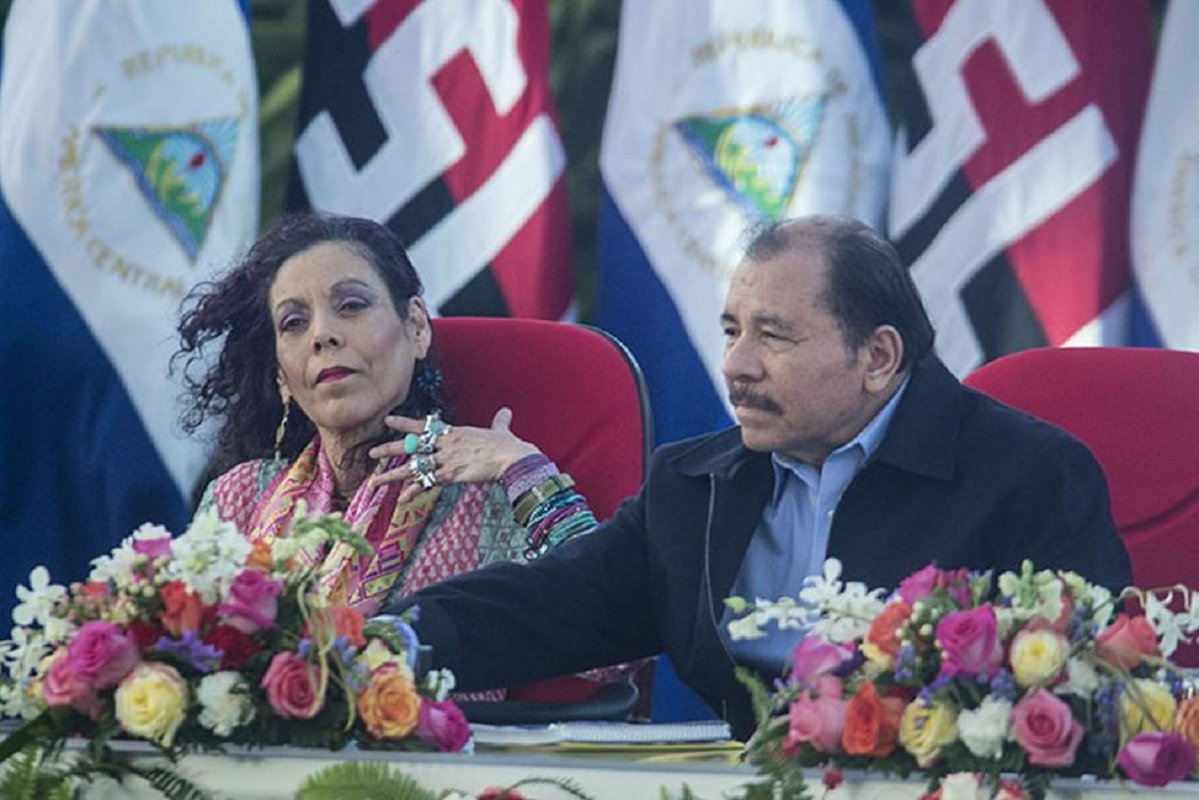 President Daniel Ortega and his wife and vice-president Rosario Murillo.Nicaragua's power couple Ortega-Murillo toppled a dynasty.The Ortega dynasty dominates the power elite and leaves little room for opposition in today's Nicaragua. Likened to a real-life “House of Cards”, it controls the country’s presidency, congress, military, police and the courts.For Ortega, it has been a long journey from his working-class roots to the pinnacle of power. In the 1980s, Ortega was a Marxist guerrilla fighter leading his Sandinista movement in their fight against the capitalist, US-backed Contra rebels. Three decades later, Ortega presides over an administration that pays fiery lip service to the “people’s revolution” complete with giant, illuminated cutouts of allies such as Venezuela’s late Hugo Chavez.
President Daniel Ortega and his wife and vice-president Rosario Murillo.Nicaragua's power couple Ortega-Murillo toppled a dynasty.The Ortega dynasty dominates the power elite and leaves little room for opposition in today's Nicaragua. Likened to a real-life “House of Cards”, it controls the country’s presidency, congress, military, police and the courts.For Ortega, it has been a long journey from his working-class roots to the pinnacle of power. In the 1980s, Ortega was a Marxist guerrilla fighter leading his Sandinista movement in their fight against the capitalist, US-backed Contra rebels. Three decades later, Ortega presides over an administration that pays fiery lip service to the “people’s revolution” complete with giant, illuminated cutouts of allies such as Venezuela’s late Hugo Chavez.
As the protests continued to escalate, calls for peace and calm came from the Superior Council of Private Enterprise (COSEP), Nicaragua’s most powerful business association, and the Catholic Church, which later agreed to serve as a mediator in talks with the state. On April 22, Pope Francis, speaking during his Sunday address to thousands of the faithful gathered in St. Peter’s Square in the Vatican City, expressed his concern about the crisis in Nicaragua and the deaths of protestors and police officers. He called “for an end to every form of violence and to avoid the useless shedding of blood” and urged that political differences be “resolved peacefully and with a sense of responsibility.” Meanwhile, on April 23, the United States Embassy in Managua announced it would cease routine operations and family members of embassy staff were ordered to leave the country.The government’s reaction to the demonstrations escalated rapidly into violent repression. The state shut down multiple television stations broadcasting live coverage and ordered anti-riot police forces to disperse the demonstrations, firing live rounds into crowds of protestors while ordering the mass arrests of student activists and attacking universities in Managua. Pro-Sandinista gangs, known as turbas, and members of the Sandinista Youth also attacked demonstrators with mortars and other arms; there are reports of turbas assaulting protestors as the police stood by and failed to intervene.By the end of the first week of protests.Among the dead was a journalist, Angel Gahona, who was shot and killed while live streaming coverage of protests in the Caribbean coastal city of Bluefields on Facebook. The Nicaraguan Red Cross reported that it assisted 435 people, 242 of whom had to be hospitalized.These are not the first protests that Ortega has faced while in office. In 2013, a coalition of environmentalists, human rights organizations, black and indigenous activists, and mestizo campesino activists mobilized to protest the passage of Law 840, which granted a concession to the Chinese corporation Hong Kong Nicaragua Canal Development Company (HKND Group) to build an interoceanic canal linking the Atlantic and Pacific to rival the one in Panama. Activists filed 38 suits against Law 840, the largest number of cases to be brought against a single law in the nation’s history. Opposition is nothing new for Ortega—he’s dealt with it his entire political life during his first term as president in the 1980s and three terms since 2007. But the recent INSS protests, which have become known as the 19th of April Movement, mark the first time that so many different sectors of Nicaraguan civil society have united to oppose him.On April 22, in response to mounting public pressure, Ortega announced in a televised speech surrounded by representatives of the business community that the government had rescinded the reforms. He called for peace, stating: “We have to restore order. We cannot allow chaos, crime and looting to prevail…and we will act under the rule of law and under the Constitution to ensure and guarantee the restoration of stability and social peace so that workers can peacefully go to work.” He also announced the mass release of detained protestors and agreed to participate in a “dialogue,” but only with the business community. Regardless, the reforms, along with the state’s brutal crackdown on protestors, have done considerable damage to the government’s public image.This is reflected, for example, in the protestors’ targeting of the most potent symbols of the administration. They have burned billboards featuring portraits of the president and party propaganda and toppled the massive “Tree of Life” light installations that line major thoroughfares throughout the capital and the nation’s major cities. The trees (140 in total) have been a pet project of Murillo in her rebranding of the FSLN as a party of love, reconciliation, Christian charity, and solidarity. Described as a “gift to the Nicaragua people,” each tree costs $25,000 to install and collectively they generate $1 million in annual energy costs. The public assault on these critical symbols of the Ortega-Murillo administration reveal that the protests have expanded far beyond anger over the austerity reforms and have given way to a much deeper set of political demands. As one protestor at a demonstration held by the Catholic Church on April 28 told reporters, “the changes in social security were the last straw. But they were doing so many things before stealing elections, stealing government money, so much corruption.”Mass demonstrations led by students broke out across Nicaragua to protest government cuts to Social Security. They were met by vicious repression from a Nicaraguan government led by Daniel Ortega, a former revolutionary who has moved far to the right.In July 1979, workers, students and farmers rose up under the banner of the Sandinista Front for National Liberation (FSLN) and overthrew the U.S.-backed dictator Anastasio Somoza Debayle and his hated National Guard. Massive changes followed as the Sandinistas wiped out illiteracy, distributed land to the poor, organized trade unions and made radical inroads on the power of the old ruling class many of whom fled to Miami after the revolution. Over the next decade, Ronald Reagan and then George H.W. Bush armed and funded a right-wing force of mercenaries, the contras, killing tens of thousands and bleeding the country dry.
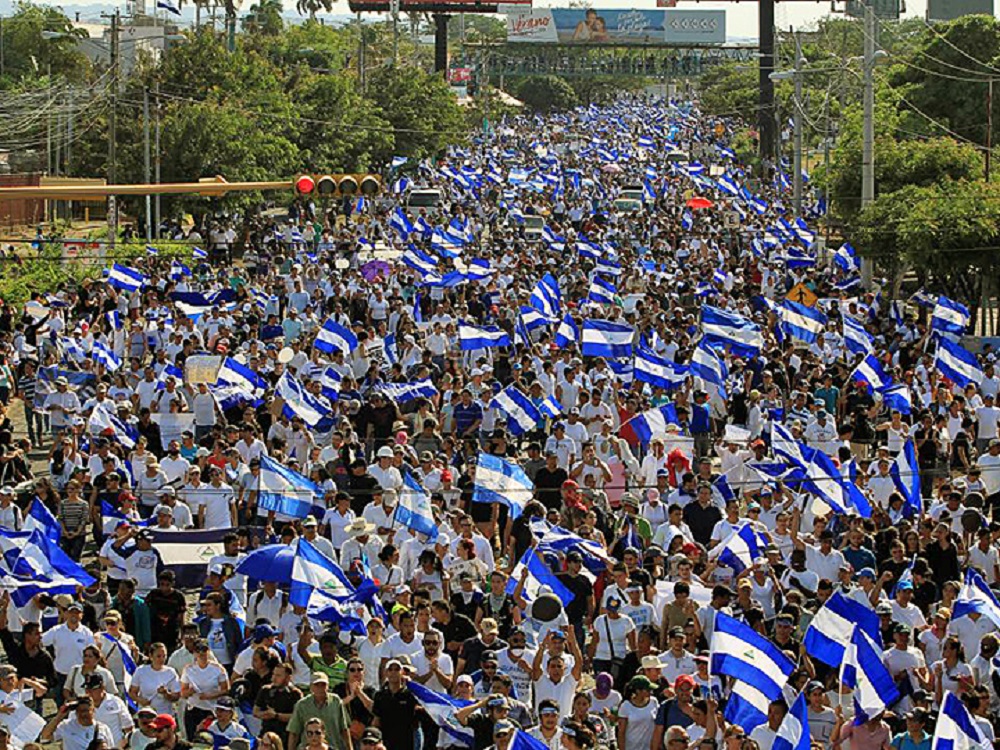
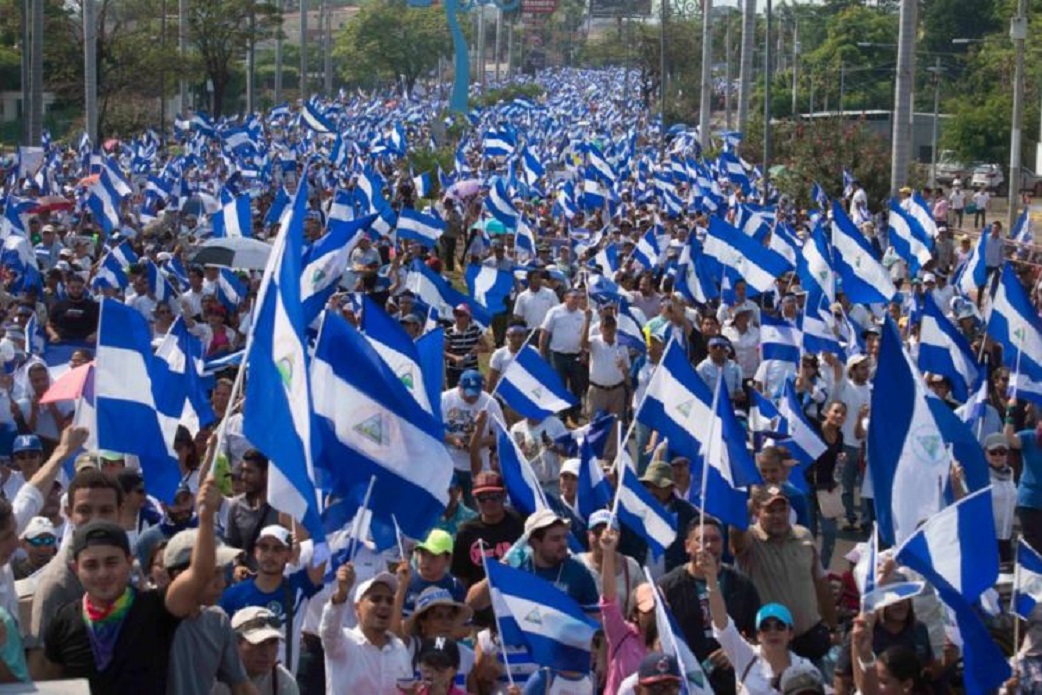 When tens of thousands of workers, pensioners and ordinary residents marched in the capital Managua to demand an end to the repression against protesters.Out! Out!” yelled some of the marchers, echoing the students’ demand that Ortega and Murillo step down.The protests widened and quickly turned into demands that President Daniel Ortega step down.The government accuses the protesters of plotting a coup d'etat against the president, who was re-elected to a third consecutive term in office in 2016.It also accuses the protesters of holding the country hostage by blocking roads and hampering trade and normal business.
When tens of thousands of workers, pensioners and ordinary residents marched in the capital Managua to demand an end to the repression against protesters.Out! Out!” yelled some of the marchers, echoing the students’ demand that Ortega and Murillo step down.The protests widened and quickly turned into demands that President Daniel Ortega step down.The government accuses the protesters of plotting a coup d'etat against the president, who was re-elected to a third consecutive term in office in 2016.It also accuses the protesters of holding the country hostage by blocking roads and hampering trade and normal business.
Between 1979 and 1990, Daniel Ortega was effectively the head of government, representing for many on the left a principled anti-imperialist. He easily won election as president in 1984. The revolution remained popular, but by 1990, exhaustion and corruption undermined the FSLN, leading to an electoral victory for right-wing puppet Violeta Chamorro.In 2007, Ortega once again won the presidency. But this time, though he was sometimes counted among the so-called "Pink Tide" left-of-center governments of Venezuela, Brazil, Ecuador and Bolivia, Ortega's administration grew increasingly corrupt and authoritarian while pursuing neoliberal investment schemes that benefited his cronies (including his wife Rosario Murillo, who is also his vice president) instead of ordinary Nicaraguans.Rosario Murillo,Daniel Ortega's wife ,she started out as a teenage mother working as a newspaper secretary, then spent decades of revolution, conflict, power and public scandal at the side of one of the region’s most influential men.Now the first lady of Nicaragua, Rosario Murillo, has succeeded in doing something that seems more like a plotline out of the Netflix series “House of Cards”: She will be on the Nov. 6 ballot to become vice president.The election, in which the couple’s victory and Mr. Ortega’s third consecutive term are all but certain, is a critical step in what people around Ms. Murillo describe as her decades-long climb to power. She paved the way by helping the poor and winning over the public, but also by holding political grudges and pushing aside nearly all the members of her husband’s inner circle.Nicaragua's current crisis is tragically ironic, considering that 40 years ago, Ortega played a central role in leading the armed movement that toppled the dictatorship of Anastasio Somoza. He served on the nine-member National Directorate that governed Nicaragua during the transition from the Somoza dictatorship to the revolutionary government. He was elected president in 1984, which he held until the Sandinistas lost the presidential elections in 1990 to the United National Opposition, a coalition of right-wing parties. Ortega thus became the first Nicaraguan president in history to peacefully cede power to an opposition party.Over the next 16 years Ortega would transform himself from a revolutionary to a political strongman who wielded decisive political influence in both the FSLN party and in national politics. During this time, he consolidated his control over the FSLN, purging the party of dissidents who questioned his actions, brokering pacts with rival political leaders, and stacking the National Assembly, the Supreme Court of Justice (CSJ), and the Supreme Electoral Council (CSE) with his supporters. Upon his re-election in 2006, made possible by changes to the nation’s electoral laws that allowed Ortega to win the presidency with only 38% of the vote, he quickly set about consolidating his hold on state power. The Ortega administration currently controls all four branches of government, the military, and the national police force, and has effectively transformed Nicaragua into a one-party state.The recent protests have prompted comparisons to the Sandinista Revolution. When protestors chant, “Ortega y Somoza son la misma cosa,” (“Ortega and Somoza are the same thing”), they highlight the fact that Ortega, the former revolutionary, has evolved into a would-be dictator. Certainly his use of cooptation, party patronage, and political repression seems to be taken directly from Somoza’s governing strategy. For more than 40 years, the Somoza family ruled Nicaragua with an iron fist and enjoyed the full backing of the United States government. From 1936, the Somoza-controlled Liberal Party dominated Nicaraguan politics through a system of corruption, bribery, constitutional manipulation, clientelism, and when that failed to quell dissent—violence, imprisonment, and political assassination. In the 1960s and 1970s, following the Somoza regime’s mishandling of a 1972 earthquake that displaced thousands of people combined with outrage over the government assassination of a respected journalist, thousands of young men and women joined the FSLN to overthrow Somoza in an unlikely revolution that many people, both inside and outside of Nicaragua, never saw coming. Ortega’s seeming inability to realize the full implications of the protests and his initially tone-deaf response to the public may prove to be his greatest mistake, echoing Somoza’s underestimation of the FSLN, which proved to be his undoing.Since returning to power in 2007, Daniel Ortega has reinvented himself as a reformed revolutionary willing to do business with the private sector and to accede a certain amount of political power and influence to the Catholic Church in order to secure his own claims to state power. Prior to his re-election in 2006, Ortega oversaw the approval by the National Assembly of one of the strictest anti-abortion laws in the hemisphere, which bans abortion even in cases of rape and incest. He has proven to be an adept neoliberal, quietly honoring free trade agreements, increasing foreign investment and the influence of the corporate sector while publicly railing against capitalism and imperialism. Upon taking office, his administration launched a vicious public media campaign against the women’s and feminist movements in Nicaragua, vilifying them as a group of lesbians, pedophiles, witches, and abortionists bent on destroying the heterosexual, nuclear Nicaraguan family. The administration launched a similar attack on the independent media, buying up newspapers and radio and television stations and denying or withdrawing permits for independent media organizations that are critical of the state.While the government has maintained a series of successful social programs that are vital for the survival of poor Nicaraguan families, these programs serve a dual role. They are administered by local government agencies known as the Life, Community, and Family Cabinets. Though the Ortega administration claims these institutions reflect the government’s commitment to accountability and participatory democracy, in fact, they are a mechanism of party patronage that allows the FSLN party-state to provide direct social benefits to its supporters while excluding its critics from much needed resources. This has been a critical strategy in Ortega’s efforts to maintain the appearance of democratic rule and electoral legitimacy. Ortega’s wholesale cooptation and weakening of the nation’s democratic institutions contravenes the very values of Sandinismo that defined the revolution as a moment of utopian possibility. In this current iteration of the Sandinista Party, very little leftist ideology remains.The FSLN and its domestic and international supporters have argued against the protests and claimed that the FSLN is the victim of a complex scheme by right-wing opposition groups to destabilize the country and seize the state. An op-ed piece published in Telesur, “Nicaragua: Next in Line for Regime Change?” claims that the protests “have been characterized by lethal violence from extreme right-wing shock groups trying to destabilize Nicaragua, just as they have done in Venezuela.” These critiques have found considerable support among the U.S. Left, which has a long relationship of solidarity with the FSLN. But Nicaragua is not Venezuela, and the crisis unfolding in Nicaragua is largely of Daniel Ortega’s own making. Despite the growing indications of an authoritarian turn under the Ortega administration, the international Left has tended to highlight the administration’s work for the poor and Ortega’s recurring success at the polls—by all accounts, he won at least 70% of the vote in the 2016 presidential elections.Nevertheless, the concern among leftists that the Right may capitalize on this moment of political instability to push through a more conservative agenda is based on previous patterns of intervention and must be taken seriously. The current threat from the Right in the United States comes in the form of the Nicaraguan Investment Conditionality Act (NICA). In 2016, the U.S. House of Representatives passed NICA, a bipartisan bill sponsored by Representative Ileana Ros-Lehtinen (R-Florida) and Representative Albio Sires (D-New Jersey), which opposes “loans at international financial institutions for the Government of Nicaragua unless the Government of Nicaragua is taking effective steps to hold free, fair, and transparent elections.” The Senate version of the bill, sponsored by Senator Ted Cruz (R-Texas), has languished in the Senate since 2017, but it appears that the legislation enjoys at least nominal support from the Trump administration. Political analysts and activists have largely repudiated this measure, arguing that it will only harm Nicaraguans and do little to unseat the Ortega administration.While no evidence has surfaced that substantiates the claims of the Ortega administration and its supporters, it is certainly within the realm of possibility that right-wing actors are attempting to leverage the moment to their own advantage. If history serves as any indication of the outcomes of U.S. involvement in this conflict, NICA would likely tip the scales in favor of a more conservative, pro-U.S., business-friendly administration. Yet it does not appear that NICA is the primary element behind the protests. The fact that the protests unfolded in the absence of a major foreign intervention illustrates that Nicaraguans stand as the real force behind the demonstrations, signaling the emergence of a grassroots, nationalist movement.
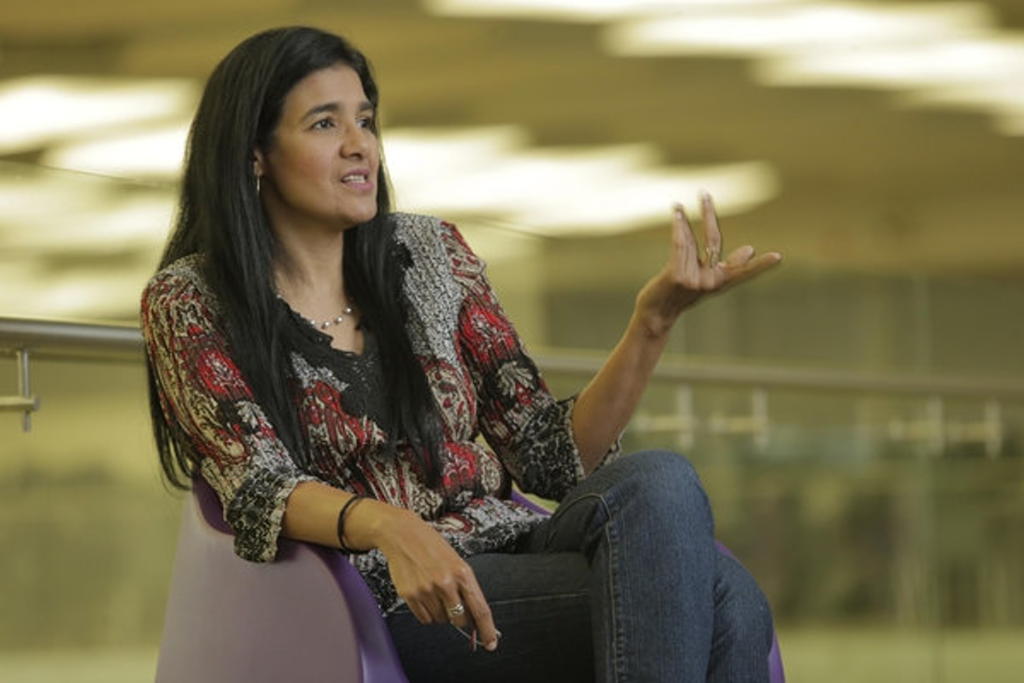 This was how Zoilamérica Ortega Murillo, the stepdaughter of Nicaraguan President Daniel Ortega, and daughter of Vice-president Rosario Murillo, when consulted by La Nación about the demonstrations in Nicaragua and the reaction of the Zoilamérica, who lives in self-exile in Costa Rica since 2013, affirms that “civil organizations and the people have tried to make their claims through appropriate means, to avoid confrontation”.
This was how Zoilamérica Ortega Murillo, the stepdaughter of Nicaraguan President Daniel Ortega, and daughter of Vice-president Rosario Murillo, when consulted by La Nación about the demonstrations in Nicaragua and the reaction of the Zoilamérica, who lives in self-exile in Costa Rica since 2013, affirms that “civil organizations and the people have tried to make their claims through appropriate means, to avoid confrontation”.
